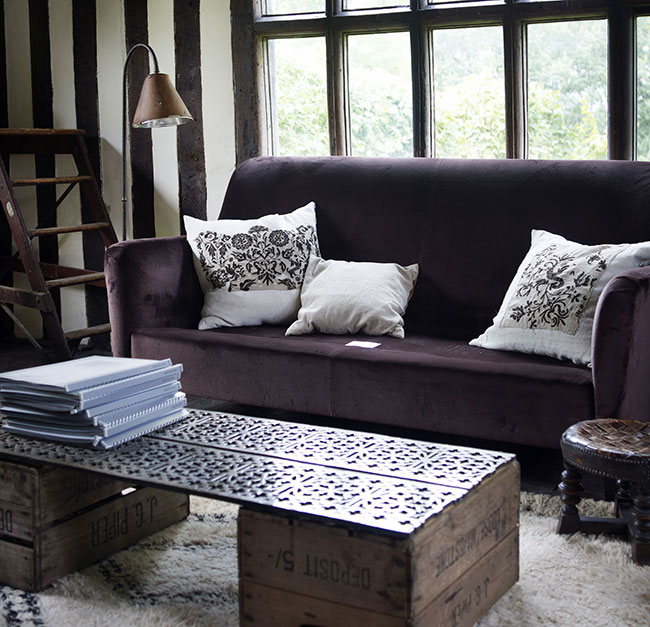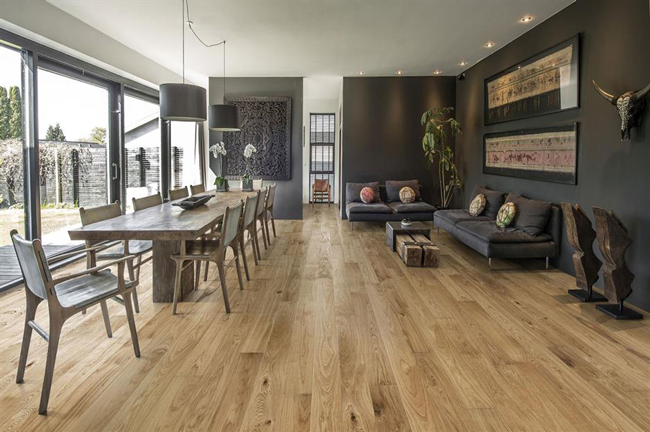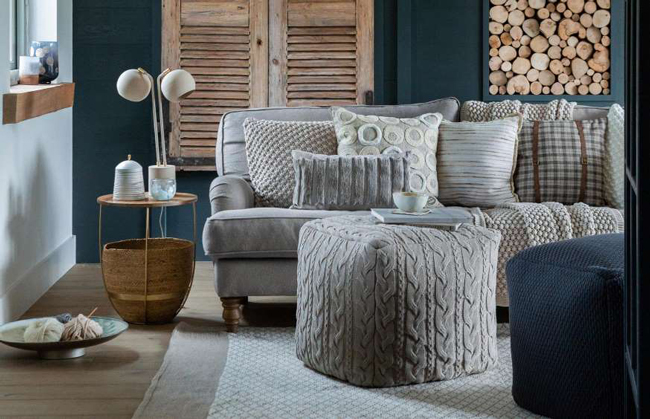

More than ever, today’s consumers are conscious of the need to recycle. We think about the consequences of haphazardly tossing items large and small into the garbage. If we no longer find it useful, perhaps someone else will. Building materials such as wood and stone are precious natural resources that can and should outlast one lifetime. In their thought-provoking book, Reclaiming Style, Using Salvaged Materials to Create an Elegant Home, the authors share their experiences designing with other people’s discards. For Maria Speake and Adam Hills, “the whole principle of antiquing is to take something from where it’s not appreciated to somewhere that it is.” This is not an easy challenge.
It takes skill and a creative eye to reuse salvaged materials. Old wood floor boards may be worn and damaged in part. To be reused successfully each board requires cleaning, sanding and revarnishing. They are now ready for a new life, and often a different use. In the inspired kitchen shown here, practical grey-fronted cabinets have been pepped up by the addition of salvaged wooden drawer fronts running in vertical and horizontal strips. The hardwood on the unit top and on the central island came from a school science laboratory. The kitchen floor has been laid with a combination of wood from an old staircase, salvaged parquet and oak floor boards. The center of this busy area is marked out with terra cotta, turquoise and olive-green cement tiles.
Speake and Hills are veterans at sourcing locations that have or will have discarded building materials. They scout out old buildings ready for the wrecking ball, renovations taking place in historic sites, schools that are getting an upgrade. They believe that we are all custodians, our job is to care for things and then move them along. The search doesn’t end with building materials.
Textiles are a rich historical gift; they contribute a beautiful cultural picture that has been indelibly stitched into the material. The authors tell us that delicate pieces of lacework and embroidery that would otherwise be too fragile to use can be backed with a stronger base textile such as linen to give them strength. The reinforced embroidery can be used as a centerpiece for a cushion or bedspread. Their colorways become the basis for the decoration of a whole room as shown here. Fabric scraps can similarly be sewn into draperies and table runners. The age and concomitant wear of the textiles enhances the old world charm of a setting. Modern décor is given warmth and interest as delicate workmanship contrasts with minimalist furnishings.
Are wallcoverings and papers equally as recyclable? A humorous display of wallpaper appears in a bathroom where a thick paper originally destined for a special edition of the complete works of Shakespeare had accidentally been put through the presses twice. Useless to the Folio Society it became salvage and blurred parts of The Taming of the Shrew line the walls of the bathroom. Watch for sales of wallpaper and fabric ends that are destined for landfill. You’ll find an exciting selection of costly materials for a fraction of their original prices. Reuse with flair as a wallpaper border, decoupage project, stitched into a quilt or curtains, trim for a tablecloth and so on.
Reclaiming Style is a testament to valuing all the beauty and artistry found in the buildings that surround us, and that we can repurpose and live with as we pass along these treasures to the next generation.




